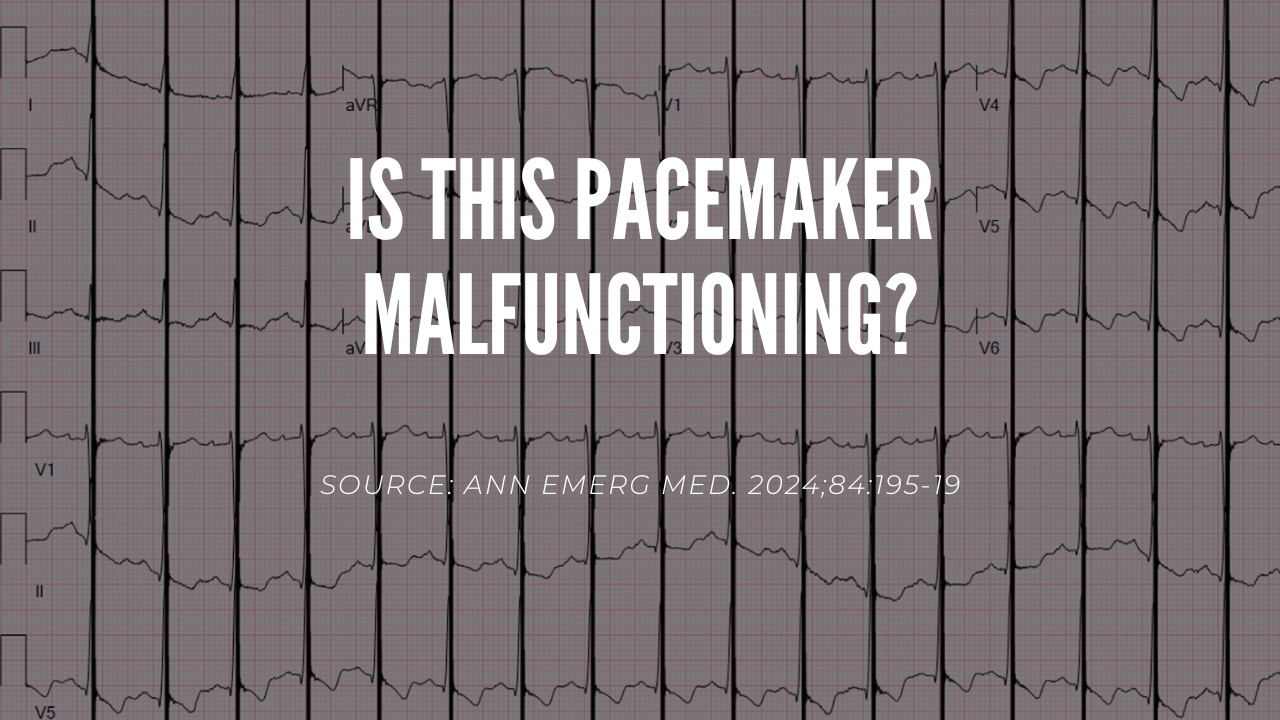A patient who presents to the your Emergency Department with a non-cardiac issue has the incidental findings on the ecg shown below. The patient has a history of non-ischaemic cardiomyopathy with LVEF of 30% and a dual chamber defibrillator in place.
Your registrar is concerned that the pacemaker is malfunctioning as it is delivering an impulse at the end of every QRS.
Is this a pacemaker malfunction? What does the ecg show?
 Source: Ann Emerg Med. 2024;84:195-19
Source: Ann Emerg Med. 2024;84:195-19
The ECG findings are :
- Sinus rhythm
- There are P waves with a spontaneous QRS complex.
- Pacemaker spikes occur at the end of the QRS.
- There is ST depression and T wave inversion in the inferior leads and V3 to V6.
The pacing spikes at the end of the QRS are normally indicative of a pacemaker malfunction except…… that this is a case of Cardiac Contractility Modulation (CCM) Therapy.
Let’s have a look at what the chest x-ray might look like (this is not of this patient).

Source: J Innov Cardiac Rhythm Manage. 2022;13(10):5205–5218
The chest x-ray shows an implantable defibrillator in the left chest and a pacing device on the right chest. This is a cardiac contractility modulating device.
What is CCM Therapy?
In CCM an implanted pulse generator delivers a non-excitatory stimulus to the heart during the absolute refractory period of the ventricles. This improves cellular Calcium handling and increases cardiac contractility, without increasing the metabolic requirements of the heart.
The purpose of CCM is to treat congestive cardiac failure. It is used in patients with New York Heart Association Class III Heart Failure and an ejection fraction of 25%-45%. There is also a requirement for a narrow QRS ( <130ms) and heart failure not responsive to medical management.
The result of CCM is that there is usually a large ‘pacing’ spike at the end of the QRS. The ST-T changes are most likely the result of lead implantation or stimulation of the myocardium.
References
- Birnbaum Y et al. Woman with a pacemaker. Ann Emerg Med. 2024;84:195-197
- Hesselson AB. Cardiac contractility modulation: a technical review. J Innov Card Rhythm Manag. 2022;13:5205-5218.










